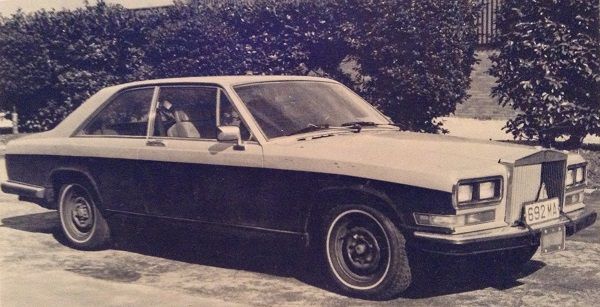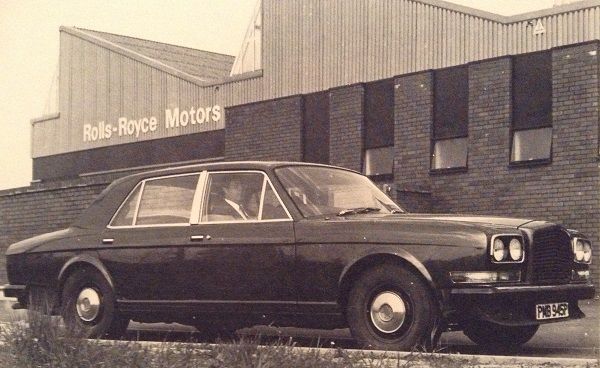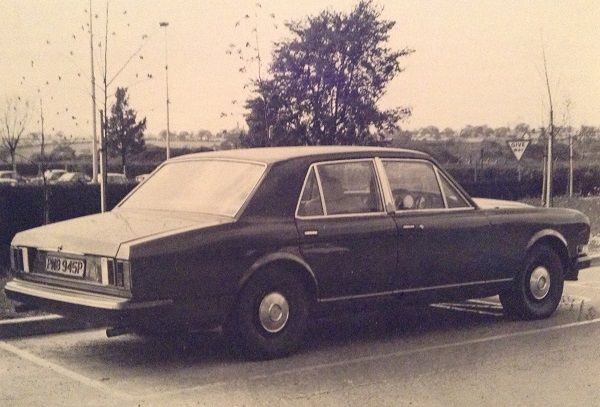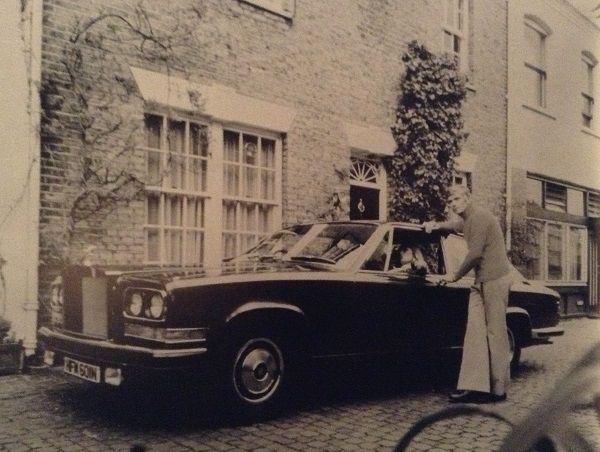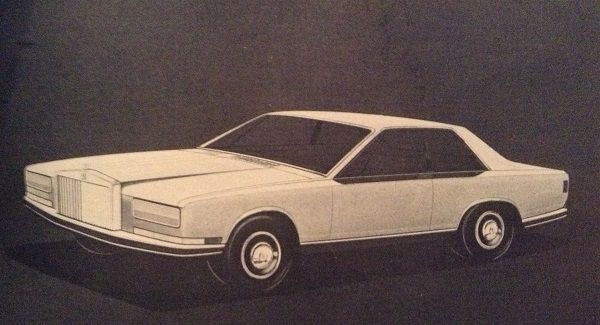tali
MB Enthusiast
Bernard Manning had one
Camargue also has distinction of having one of the , if not the biggest boot at 25 cu ft (VW jetta was next @23 cu ft)
I suppose the big boot was needed to carry all the cash around!
531 produced and only 186 RHD cars
"1975 Camargue is launched to the press in January, at Catania in Sicily. Price is announced as £29,250; at the time, a Phantom VI cost £21,352 and a Corniche £19,013. After first 30 cars have been built, Shadow-type twin SU carburettors are replaced by a four-choke Solex for extra top-end performance.
1978 Production of Camargue bodies is moved from Mulliner Park Ward to Rolls-Royce’s factory at Crewe. Rear suspension is redesigned to improve ride and handling, and reduce road noise; it will subsequently be fitted to the new Silver Spirit. Hydraulic fluid (used in high-pressure system for brakes and self-levelling rear dampers) is switched from RR363 to non-hygroscopic, non-corrosive HSMO type. 1985 A single Bentley-badged Camargue, with Bentley grille, is made for a customer.
1986 To mark the end of production, 12 Limited Edition Camargues are built for USA, all in white, with white Everflex roofs, and red interiors piped in white. Production ends in December, by which time list price is £83,122 (unchanged since 1981). A total of 529 Rolls-Royces, one Bentley, and four experimental cars have been made." - See more at: Rolls-Royce Camargue (1975-1986) | Buying guide | Octane
. "Andy Smith, the parts manager at specialist P&A Wood, tells us that bumpers are no longer available new, and there is just one headlight surround left (£161.40 plus VAT, if you need it). And these parts will be very hard to find secondhand: Peter Johnson of long-established RR and Bentley breakers Flying Spares says he’s never had a Camargue in for dismantling – ‘…and it would be sacrilege to do so!’ "- See more at: Rolls-Royce Camargue (1975-1986) | Buying guide | Octane
A body shell
Bonhams 1793 : Rolls-Royce Camargue Coupé Bodyshell
"Camargue body panels were last listed at £5,403 (bonnet), £2,957 (front wing) and £3,363 (door). "
A very early Camargue
1976 Rolls-Royce Camargue Coupé For Sale on Car And Classic UK [C272011]
One with 912 miles only
Rolls-Royce Camargue 912 miles only!! For Sale (1982) on Car And Classic UK [C322448]
The last one made
Rolls-Royce Carmargue - P & A Wood, Essex
One with very rare tweed/velour seats - and early
http://m.bonhams.com/auctions/14262/lot/477/
"1800TU" today
ROLLS ROYCE CAMARGUE RHD for sale - Octane Magazine
For comparison this Rolls cost the owner $31,000 in 1933 making it the most expensive car in the world built that year and over 50-percent more than the “Twenty Grand” Duesenberg created that same year - about $513000 today
http://www.rmauctions.com/CarDetails.cfm?SaleCode=MC10&CarID=r169
Camargue also has distinction of having one of the , if not the biggest boot at 25 cu ft (VW jetta was next @23 cu ft)
I suppose the big boot was needed to carry all the cash around!
531 produced and only 186 RHD cars
"1975 Camargue is launched to the press in January, at Catania in Sicily. Price is announced as £29,250; at the time, a Phantom VI cost £21,352 and a Corniche £19,013. After first 30 cars have been built, Shadow-type twin SU carburettors are replaced by a four-choke Solex for extra top-end performance.
1978 Production of Camargue bodies is moved from Mulliner Park Ward to Rolls-Royce’s factory at Crewe. Rear suspension is redesigned to improve ride and handling, and reduce road noise; it will subsequently be fitted to the new Silver Spirit. Hydraulic fluid (used in high-pressure system for brakes and self-levelling rear dampers) is switched from RR363 to non-hygroscopic, non-corrosive HSMO type. 1985 A single Bentley-badged Camargue, with Bentley grille, is made for a customer.
1986 To mark the end of production, 12 Limited Edition Camargues are built for USA, all in white, with white Everflex roofs, and red interiors piped in white. Production ends in December, by which time list price is £83,122 (unchanged since 1981). A total of 529 Rolls-Royces, one Bentley, and four experimental cars have been made." - See more at: Rolls-Royce Camargue (1975-1986) | Buying guide | Octane
. "Andy Smith, the parts manager at specialist P&A Wood, tells us that bumpers are no longer available new, and there is just one headlight surround left (£161.40 plus VAT, if you need it). And these parts will be very hard to find secondhand: Peter Johnson of long-established RR and Bentley breakers Flying Spares says he’s never had a Camargue in for dismantling – ‘…and it would be sacrilege to do so!’ "- See more at: Rolls-Royce Camargue (1975-1986) | Buying guide | Octane
A body shell
Bonhams 1793 : Rolls-Royce Camargue Coupé Bodyshell
"Camargue body panels were last listed at £5,403 (bonnet), £2,957 (front wing) and £3,363 (door). "
A very early Camargue
1976 Rolls-Royce Camargue Coupé For Sale on Car And Classic UK [C272011]
One with 912 miles only
Rolls-Royce Camargue 912 miles only!! For Sale (1982) on Car And Classic UK [C322448]
The last one made
Rolls-Royce Carmargue - P & A Wood, Essex
One with very rare tweed/velour seats - and early
http://m.bonhams.com/auctions/14262/lot/477/
"1800TU" today
ROLLS ROYCE CAMARGUE RHD for sale - Octane Magazine
For comparison this Rolls cost the owner $31,000 in 1933 making it the most expensive car in the world built that year and over 50-percent more than the “Twenty Grand” Duesenberg created that same year - about $513000 today
http://www.rmauctions.com/CarDetails.cfm?SaleCode=MC10&CarID=r169
Last edited:



